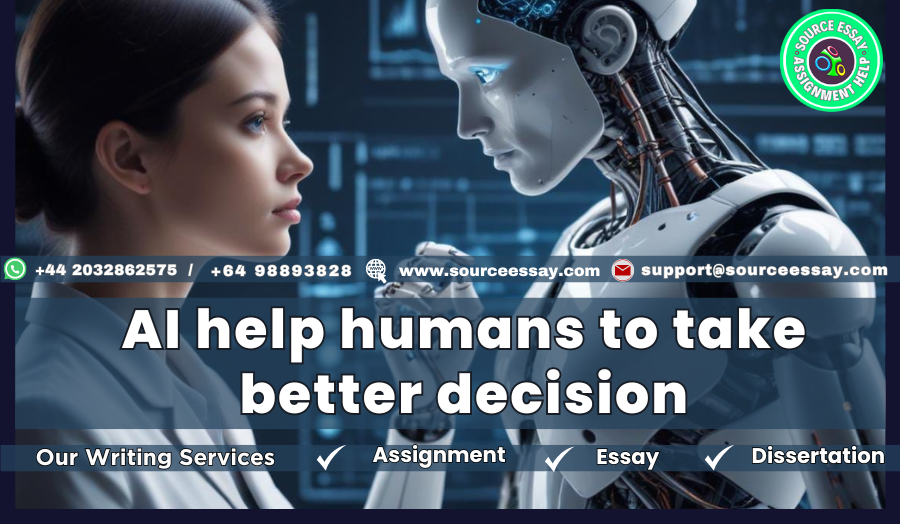Artificial intelligence is nowadays used in almost every industry, from commerce to finance, and education too. AI is simply everywhere, but what does one mean by AI? Let’s understand what AI is and how it operates, which will give us more insight into our question and the answer of how AI can be beneficial to decision-making. Let’s start with…
First ever digital computer
AI’s HIstory First ever digital computer was built in 1940s surround 80 years of progress has led to us to the age of AI which is quite fast Pieces are small robotic mouse that could navigate most amazes was created around 9250 later we got perception mark one which is regarded as the first artificial intelligence which could visually distinguish cards then we got TD gaman the software learn how to play A high level game just below top human player and then later on.
We got AlexNet. This is the pivotal learning point where deep learning systems on neural networks, which have main layers, started to become more prominent. Afterwards, we got artificial language intelligence with language and image recognition capabilities. And thus, we arrive today. The progress was quite rapid and quite fast since the inception of computers. We grew and added until we arrived at displays, and it is even predicted to grow even more in the future.
The word “artificial intelligence”?
So after we have understood this, what is the meaning of the word “artificial intelligence”? The term “artificial intelligence” refers to a broad and wide range of technologies. The ones we have discussed in the short history include game engines that can play against the game or players, facial recognition systems, and so on. The term “artificial intelligence” is an umbrella term that refers to computers capable of performing tasks that would require a human to do historically, for example, playing chess. Playing chess is a human task.
Specialized form of machine learning.
Now we can discuss the encompassing technologies that are usually set as a subset of AI. Machine learning involves training algorithms on data to create models that allow computers to perform tasks like making songs or recommending songs on Spotify. ML or machine learning is used to recommend songs to users. The same goes for Flipkart and other platforms. Deep learning is a specialized form of machine learning.
Accessible to everyone.
It is still a subset of artificial intelligence that performs complex tasks, such as image recognition and natural language processing (NLP). NLP enables machines to understand human language. This is said to be a turning point where AI becomes more accessible to everyone. NLP models are quite useful and are used in large language models.
The natural next question that arises in anyone’s mind is then, how do we make these AIs? How do they function inside? Well, the answer is not quite as hard as one may presume. One can say that an AI is a huge number crunched together to make certain sensible things out of it, which may seem weird. However, this is how most of the AIs work: by collecting or preparing data. Data sets are quite useful.
Launching patterns and relations within data
The major thing that helps an AI to be trained and work is writing algorithms. It’s essential for an AI to have a good supervisor during learning, just like having a teacher. If your teacher is bad, you will not learn anything; if your teacher is good, you will learn everything. Now, the training part involves launching patterns and relations within data. This is where the magic happens.
If we wear it can do predictive tasks. And all that later on this tab and the evaluation and training part are usually mixed through the fine-tuning and hyperparameter optimizations are used to fine-tune and adjust everything to the right things. Let’s say you don’t want an Artificial intelligence to give out advice on how to spoil food then you may have a parameter that stops an AI from recommending that prompt.
Records and try to predict the future
How can I help us in making decisions? Well, let’s see. The last part we have understood is that data is basically made up of a bunch of information, and data can predict a lot of things. If you can understand data, then it is for sure that you can predict certain future outcomes given certain cases. It may not always be true, but in various cases, data is used in a lot of places. We derive data from records and try to predict the future.
This is basically how predictive models work, which can enable us to avoid disasters, prepare for uncertainties that may arise in a business, a country, a local area, etc. It has shown to be really beneficial. A near-local forecast may not be possible in certain countries that are not that advanced or have money or ability to launch satellites and other data sets to map out their local areas and predict there. AI can be greatly beneficial if trained properly.
Disaster response
It can predict wildfire prediction. It can do market optimization, which means that it could help you optimize the cost of running a business. This can be a great saver if you are a small company or a huge company. It can be hugely beneficial to your work, especially in disaster response.
Artificial Intelligence is like SwissTours’ rapid damage assessment analysis drones, images, and pinch expedited insurance claims after natural disasters. It is a great tool outright, and it has already been used in various sectors, especially in weather forecasting, as mentioned before.

